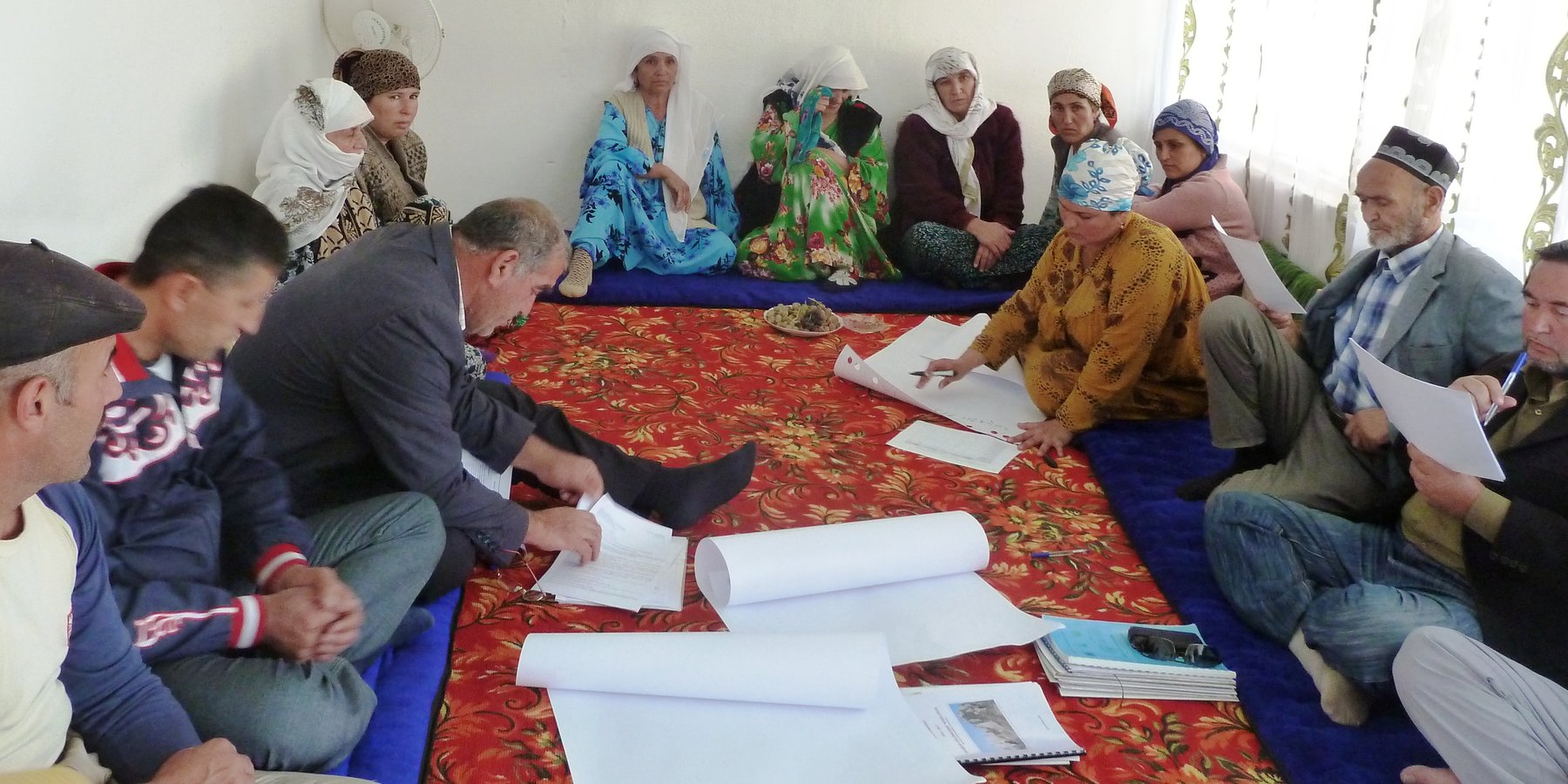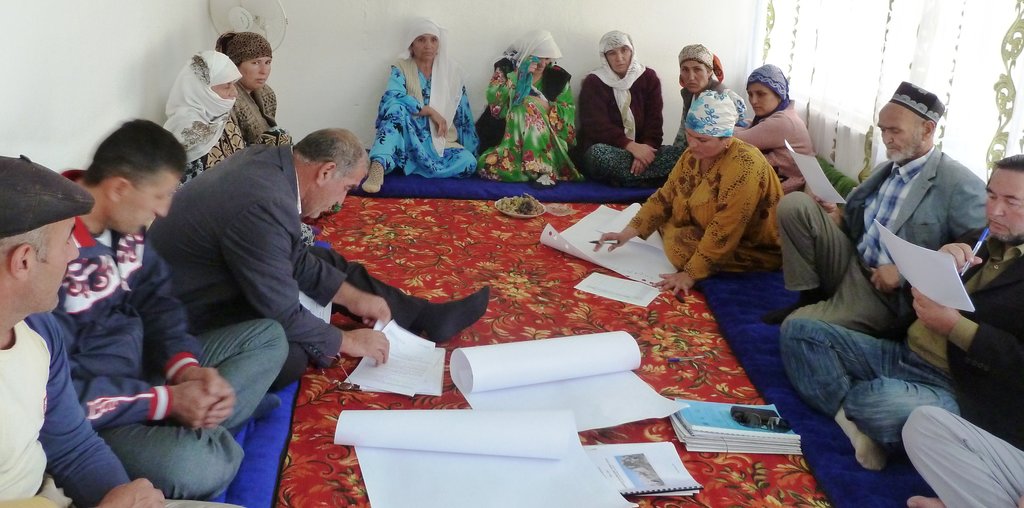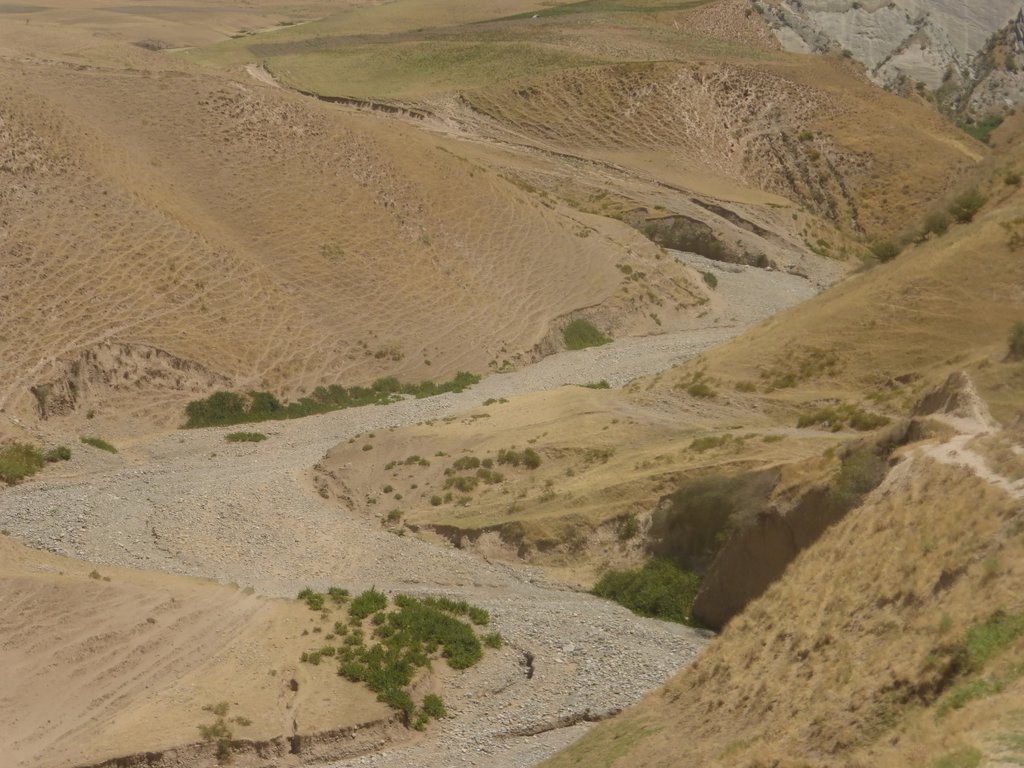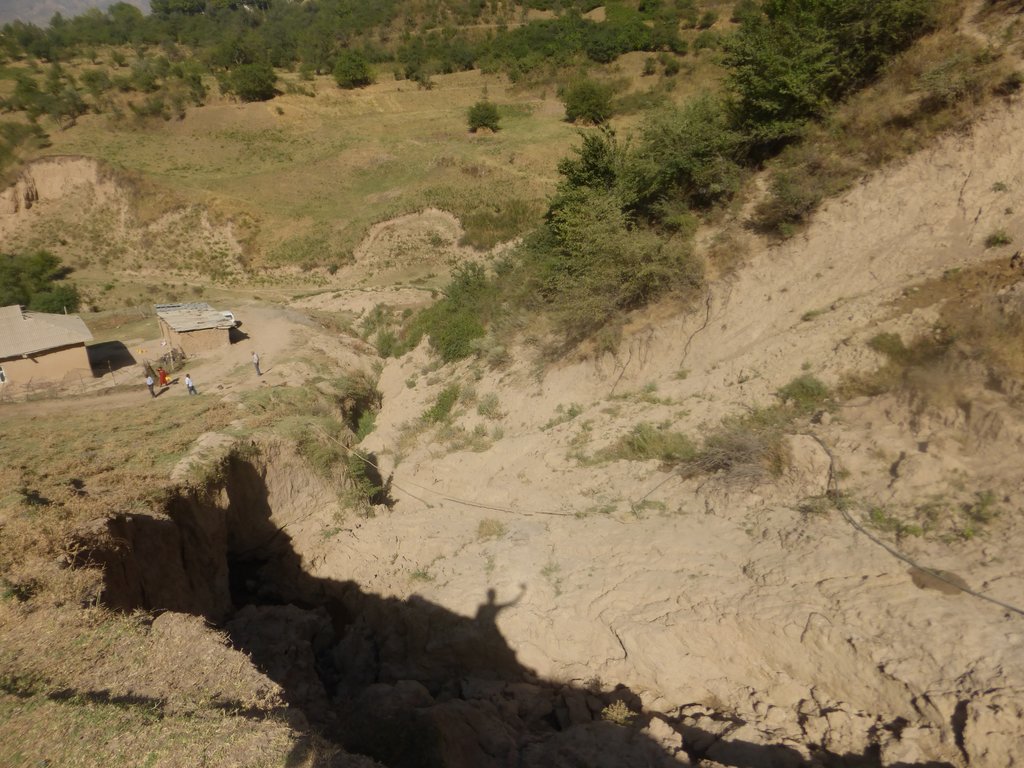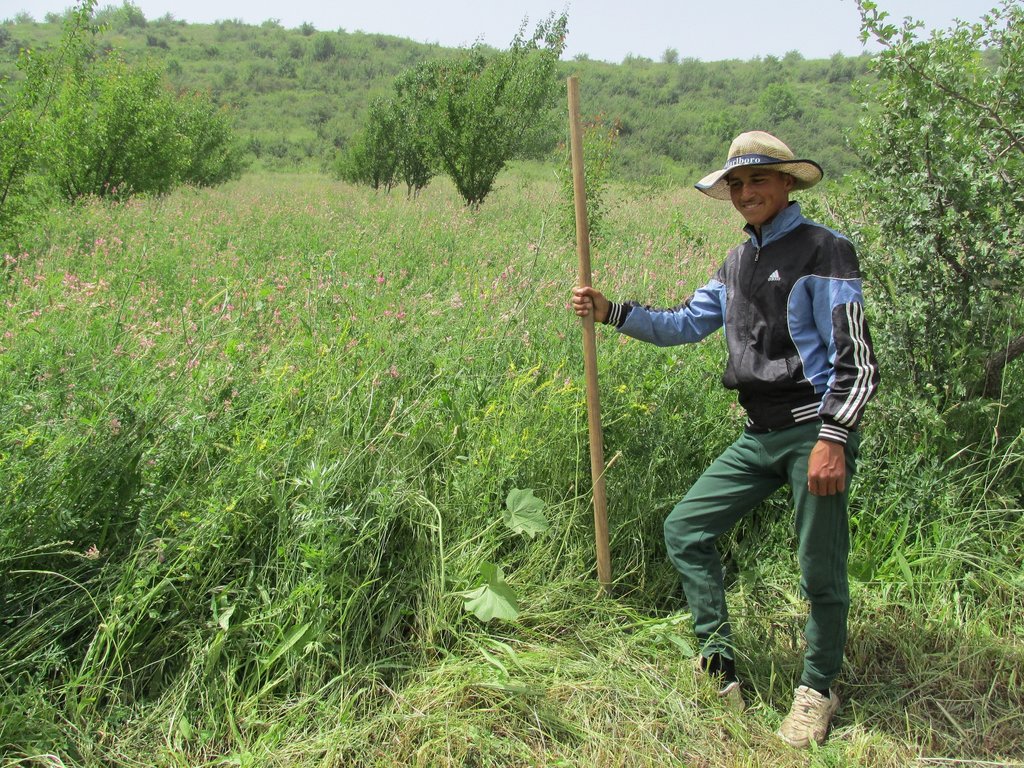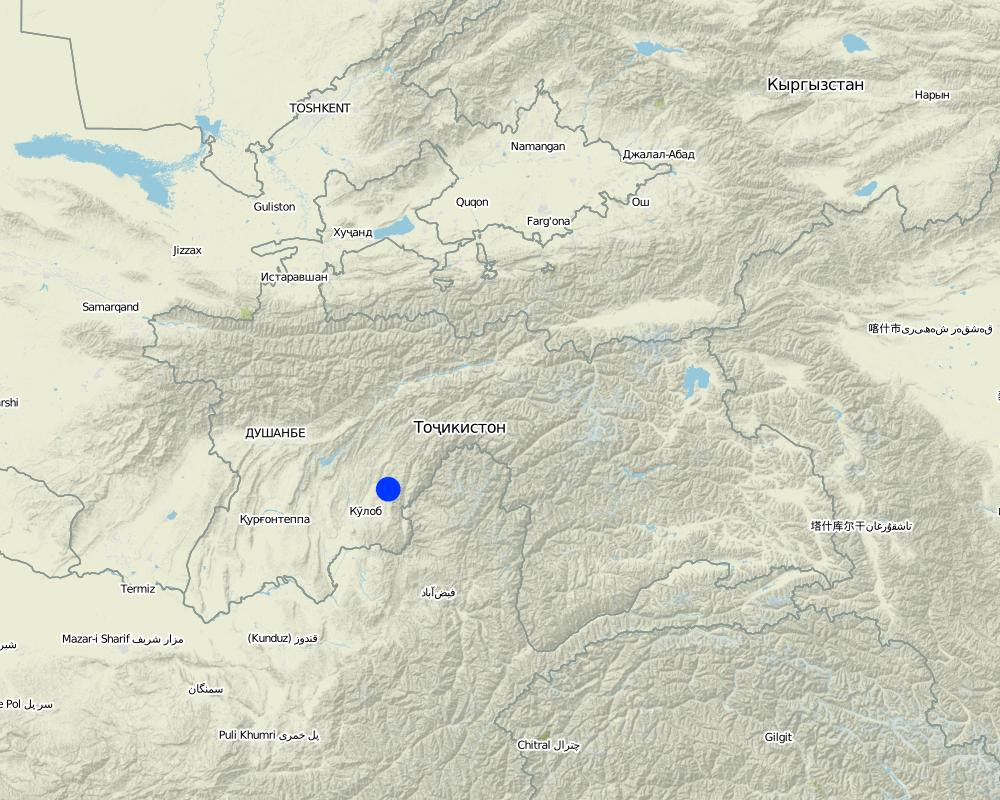Pasture User Union [Tajikistan]
- Creation:
- Update:
- Compiler: Boris Orlowsky
- Editors: Sa'dy Odinashoev, Nicole Stolz
- Reviewers: Alvin Chandra, Alexandra Gavilano
Jamiyati charogoh istifobarandagon
approaches_629 - Tajikistan
View sections
Expand all Collapse all1. معلومات عامة
1.2 Contact details of resource persons and institutions involved in the assessment and documentation of the Approach
Name of project which facilitated the documentation/ evaluation of the Approach (if relevant)
Book project: where people and their land are safer - A Compendium of Good Practices in Disaster Risk Reduction (DRR) (where people and their land are safer)Name of the institution(s) which facilitated the documentation/ evaluation of the Approach (if relevant)
CARITAS (Switzerland) - Switzerland1.3 Conditions regarding the use of data documented through WOCAT
When were the data compiled (in the field)?
11/10/2016
The compiler and key resource person(s) accept the conditions regarding the use of data documented through WOCAT:
نعم
1.4 Reference(s) to Questionnaire(s) on SLM Technologies
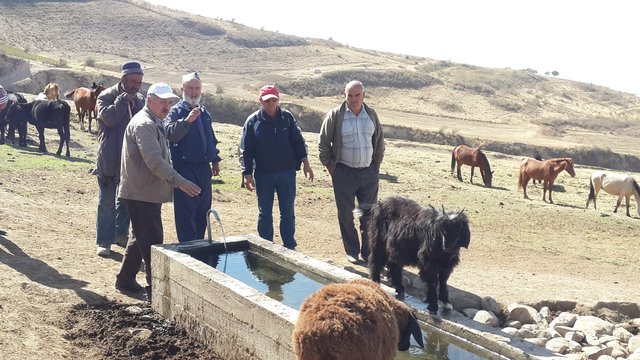
Water points for livestock in daily pastures [Tajikistan]
Water points for daily use in pastures, reducing erosion and enhancing productivity of cattle and other livestock.
- Compiler: Nicole Stolz
2. Description of the SLM Approach
2.1 Short description of the Approach
Livestock holders at village level join a pasture user union to access different rights provided under the national law "About pastures" passed in 2013. Among others, the Paster User Unions (PUUs) are able to obtain onwership of a communal collective pasture land, have the right to collect fees to improve the pasture and balance livestock and available fodder amounts in the watershed areas.
2.2 Detailed description of the Approach
Detailed description of the Approach:
The Pasture User Union (PUU) is the legal entity at village-level to implement the law "About pastures" passed on 19th of March 2013.
All households of a village are represented by one female and one male representative in the union. At the general assembly, 11 people are selected as governing body of the union. The union is entitled to:
- receive a land certificate for communal collective daily pastures nearby the village as well as more distant summer pastures
- collect fees according to a system they can decide at their general assembly (in the study case the fees were based on heads of animals)
- can use collected fees to improve the pastures of the village
- can represent villager’s interests when it comes to land use conflicts related to pasture and livestock
The Pasture User Unions have the obligation to:
- pay taxes to the land use committee
- sustainably use their pasture land
Pasture User Unions were trained by SLM specialists from Caritas Switzerland on a series of technologies to improve their pasture land. Relevant technologies consist of rotational grazing, water points in pasture areas, calculation of bearing capacities, implementation of contour lines plantations etc. All these technologies aim at a sustainable use of the land, that result in increased vegetation cover, increased infiltration of water, and reduced erosion, degradation and mass movements/landslides.
As one of the only functioning structures at village-level, with access to resources, the pasture user unions take lead during disasters and emergencies. Pasture User Unions have for example evacuated animals during flood events in a collective manner. They have also organized a “Hashar” i.e. a collective voluntary work to clean the flood channels crossing their village. The longer term impact of pasture unions both at watershed level with improved pasure management and at village level with improved preparedness is yet difficult to assess.
2.3 Photos of the Approach
2.5 Country/ region/ locations where the Approach has been applied
بلد:
Tajikistan
Region/ State/ Province:
Khatlon
Further specification of location:
Muminabad
Comments:
Paster User Unions are functioning in the whole country, but documented based on an example in Muminabad district, Dehbaland village
Map
×2.6 Dates of initiation and termination of the Approach
Indicate year of initiation:
2013
If precise year is not known, indicate approximate date when the Approach was initiated:
less than 10 years ago (recently)
Comments:
The approach itself is older and was known under the title "livestock comittee", with passing the law in 2013 the title and opportunities of the approach changed
2.7 Type of Approach
- recent local initiative/ innovative
2.8 Main aims/ objectives of the Approach
Enhance rights and profit of livestock onwers at the community level
2.9 Conditions enabling or hindering implementation of the Technology/ Technologies applied under the Approach
availability/ access to financial resources and services
- enabling
as juridical person (i.e. pasture user union) services can be accessed for example credits. Projects can thus cooperate with the Pasture User Unions and receive resources.
collaboration/ coordination of actors
- enabling
Bringing together of people facilitates collective action, especially that related to communal work such as cleaning of flood channels
legal framework (land tenure, land and water use rights)
- enabling
Based on the pasture law passed, a series of rights are given to pasture user unions
- hindering
Missing legal frameworks in neighbouring countries can be an obstacle.
land governance (decision-making, implementation and enforcement)
- enabling
Paster user unions are responsible for managing land governance and land user conflicts
3. Participation and roles of stakeholders involved
3.1 Stakeholders involved in the Approach and their roles
- local land users/ local communities
PUU are composed by maximum 2 representatives of each household of the community - the PUU should be composed by 50% women and 50% men.
Out of those community representatives 11 people are elected as the governing body of the PUU (the women's quota should be at least at 30%).
- SLM specialists/ agricultural advisers
Private sector rural advisory services provide support to pasture improvements. Veterinary services enhance animal health.
Rural advisory service is available at the district level and supports farmers and farmer groups with payable advise on agricultural questions. Veterinary services are availible at district level on demand, they provide vaccination and treatment for animals.
- NGO
Supports the capacity building of the union by trainings and non payable rural advisory services as well as awareness raising on legal situation.
Regular visits to the management board of the PUU as well as open door for questions by PUU.
- national government (planners, decision-makers)
Guarantees the fulfilment of rights provided in the law "About pastures"
If several stakeholders were involved, indicate lead agency:
The lead is with the local land users
3.2 Involvement of local land users/ local communities in the different phases of the Approach
| Involvement of local land users/ local communities | Specify who was involved and describe activities | |
|---|---|---|
| initiation/ motivation | passive | originally technologies to improve the use of pastures were introduced by Caritas Switzerland, which helped the farmers to organise in livestock committees. |
| planning | interactive | Caritas and livestock commitee members were involved in developing and passing the law "about pasture" in Tajkistan to ensure the protection of community pastures. |
| implementation | self-mobilization | Implementation is entirely in the hands of the unions. |
| monitoring/ evaluation | self-mobilization | Monitoring is entirely in the hands of the unions. |
3.3 Flow chart (if available)
3.4 Decision-making on the selection of SLM Technology/ Technologies
Specify who decided on the selection of the Technology/ Technologies to be implemented:
- mainly SLM specialists, following consultation with land users
Specify on what basis decisions were made:
- evaluation of well-documented SLM knowledge (evidence-based decision-making)
- personal experience and opinions (undocumented)
4. Technical support, capacity building, and knowledge management
4.1 Capacity building/ training
Was training provided to land users/ other stakeholders?
نعم
Specify who was trained:
- land users
If relevant, specify gender, age, status, ethnicity, etc.
PUU members (50% women/50% men) and herders (100% men)
Form of training:
- farmer-to-farmer
- courses
Subjects covered:
Awareness raising of livestock onwers on bearing capacities of pastures;
Facilitation of introduciton of rotational grazing system of spring, summer and autumn pastures. Skills training for hearders including identifiation when pasture is ready for grazing (i.e. good herbs arelady have reproduced seeds).
Training of farmers in the PUU in cultivation of fodder crops (Aflaalfa, esparcettes, etc)
4.2 Advisory service
Do land users have access to an advisory service?
نعم
Specify whether advisory service is provided:
- on land users' fields
Describe/ comments:
NGO services helped to set up the pasture management system by facilitation of process through visual aids like watershed maps showing soil quality, slope gradients, vegetation cover, etc. Together with the number of animals in the community and the fodder needs of the community was established and guided the discussion to identify pastures, define rotational schemes, identify potential options of water points on daily pastures, identify arable land to cultivate fodder, identify and demarcation of roads for herds to reach daily pastures.
4.3 Institution strengthening (organizational development)
Have institutions been established or strengthened through the Approach?
- yes, greatly
Specify the level(s) at which institutions have been strengthened or established:
- local
Describe institution, roles and responsibilities, members, etc.
While the institutions are local and at the municipal level, the law is established at the national level.
Specify type of support:
- capacity building/ training
- legal advice
Give further details:
Mainly technical trainings on pasture management as well as legal how to apply and register pasture land for the use by the PUU
4.4 Monitoring and evaluation
Is monitoring and evaluation part of the Approach?
نعم
Comments:
Yes pastures conditions are monitored twice a year by PUU
If yes, is this documentation intended to be used for monitoring and evaluation?
لا
4.5 Research
Was research part of the Approach?
لا
5. Financing and external material support
5.1 Annual budget for the SLM component of the Approach
Indicate the annual budget for the SLM component of the Approach in US$:
1000,00
If precise annual budget is not known, indicate range:
- < 2,000
Comments (e.g. main sources of funding/ major donors):
Collection of fees per head of livestock
5.2 Financial/ material support provided to land users
Did land users receive financial/ material support for implementing the Technology/ Technologies?
نعم
If yes, specify type(s) of support, conditions, and provider(s):
The PUU as one of the only juridical person at grassroot level is a preferred partner in the implementation of larger projects of International NGOs and UN. For example the PUU in Muminabad district recieved a much higher share of agricultural machinery from an IFAD project than other districts in the proejct area, as the PUU gauranteed a collective ownership, which is more efficient than a single ownership for an agricultural machinery.
5.3 Subsidies for specific inputs (including labour)
- infrastructure
| Specify which inputs were subsidised | To which extent | Specify subsidies |
|---|---|---|
| water points | fully financed | Construction materials of water points were funded. |
If labour by land users was a substantial input, was it:
- voluntary
5.4 Credit
Was credit provided under the Approach for SLM activities?
لا
5.5 Other incentives or instruments
Were other incentives or instruments used to promote implementation of SLM Technologies?
نعم
If yes, specify:
Policies and regulations to provide incentives to create PUUs
6. Impact analysis and concluding statements
6.1 Impacts of the Approach
Did the Approach enable evidence-based decision-making?
- No
- Yes, little
- Yes, moderately
- Yes, greatly
Watershed maps were used as powerful visiual tool to identify pastures and rotational grazing schemes
Did the Approach help land users to implement and maintain SLM Technologies?
- No
- Yes, little
- Yes, moderately
- Yes, greatly
Working together as a legally recognized Union empowers people and help to share the work that otherwise is assumed by livestock owners alone.
Did the Approach improve coordination and cost-effective implementation of SLM?
- No
- Yes, little
- Yes, moderately
- Yes, greatly
Which technologies are used, is decided at the union level and not a household level, which pasture land can be used by the village is decided at naitonal level and guaranteed for long term use
Did the Approach mobilize/ improve access to financial resources for SLM implementation?
- No
- Yes, little
- Yes, moderately
- Yes, greatly
The PUU as juridical person has access to different services and benefits e.g. PUU were beneficiaries of a IFAD donation of agricultural machinery
Did the Approach improve knowledge and capacities of land users to implement SLM?
- No
- Yes, little
- Yes, moderately
- Yes, greatly
Trainings were provided to the stakeholders
Did the Approach build/ strengthen institutions, collaboration between stakeholders?
- No
- Yes, little
- Yes, moderately
- Yes, greatly
There is a regular exchange forum between state and pasture user unions at provincial and national level
Did the Approach mitigate conflicts?
- No
- Yes, little
- Yes, moderately
- Yes, greatly
One of the functions of the unions is to mitigate land user conflicts, but more time is needed to assess its efficiency for this function.
Did the Approach improve gender equality and empower women and girls?
- No
- Yes, little
- Yes, moderately
- Yes, greatly
by a quota of 50% women in the union, beyond this not further training is provided to women
Did the Approach improve issues of land tenure/ user rights that hindered implementation of SLM Technologies?
- No
- Yes, little
- Yes, moderately
- Yes, greatly
The PUU is the key to fulfill the rights of communal pasture land certified by the state
Did the Approach lead to improved food security/ improved nutrition?
- No
- Yes, little
- Yes, moderately
- Yes, greatly
An estimated increase of income of 50% by appliying the different technologies connected to the approach
Did the Approach lead to improved access to water and sanitation?
- No
- Yes, little
- Yes, moderately
- Yes, greatly
For aninmals on pastures
The PUU takes responsibilities to organise volunatry works at community level i.e. cleanign sediments and waste in river beds and by this lowering the risk of flooding
Did the Approach lead to employment, income opportunities?
- No
- Yes, little
- Yes, moderately
- Yes, greatly
Single jobs as herdsmen are created and substantial increase in income is generated by healthier animals (more milk, more meat)
6.2 Main motivation of land users to implement SLM
- increased production
improved pastures increase productivity of livestock and farms
- increased profit(ability), improved cost-benefit-ratio
improved pastures increase profit from livestock
- reduced land degradation
applied technologies reduce land degradation in pastures and by livestock
- reduced risk of disasters
reduced degradation increases vegetation cover, that in turn reduces risks of landslides and mass land movements during heavy rainfall.
Organization of voluntary work at community level, such as river bed cleaning reduces risk of flooding.
- conflict mitigation
land use conflicts between villages, local communities and national livestock investors is mitigated via the PUU platform
6.3 Sustainability of Approach activities
Can the land users sustain what has been implemented through the Approach (without external support)?
- yes
If yes, describe how:
As the PUU has become a juridical person for governing pastures in Tajikistan, including the right to collect money and obliation to pay taxes, it is highly likely that the approach will be sustainable. Social and economical benefits in beeing organized as a PUU clearly overweight negtaive aspects like spending time for meetings.
6.4 Strengths/ advantages of the Approach
| Strengths/ advantages/ opportunities in the land user’s view |
|---|
| Increase in productivity (milk and meat) and reproduction of animals (offsprings) |
| PUU members gain the right to have collective land tenure guaranteed for long term (99 years) by the state of Tajiksitan. |
| Strengths/ advantages/ opportunities in the compiler’s or other key resource person’s view |
|---|
| The PUU is entitled by the law "About pastures" to act on behalf of the community related to all pasture issues. |
| Enhances the implementation and governance of technologies to improve the pasture management. |
| Being part of the judiciary, PUU provides multiple benefits to the community i.e. having a own account, having the right to collect fees and has the obligation to pay taxes, |
| Improved pasture management reduces downstream risks (floods, erosion), land degradation and enhances longer term soil fertility |
6.5 Weaknesses/ disadvantages of the Approach and ways of overcoming them
| Weaknesses/ disadvantages/ risks in the land user’s view | How can they be overcome? |
|---|---|
| There is not enough food/dairy processing equipment to maximize benefit from milk, meat, and wool. Need to establish a functioning cold chain for the different diary products. | Get more project support |
| Weaknesses/ disadvantages/ risks in the compiler’s or other key resource person’s view | How can they be overcome? |
|---|---|
| Given the success of the approach, the price of meat has decreased in the market (from 30 Somoni to 25 Somoni for 1 kg of beef). This provides a low value for livestock produce to farmers. | Move from quantity to quality of produce. Improve food processing standards in the local market. |
| Provide incentives to reduce livestock numbers in the watershed by diversifying farmer income such as increasing milk and meat productivity. | Stall feeding, improved breeds, zero grazing etc. |
7. References and links
7.1 Methods/ sources of information
- field visits, field surveys
Visit to pasture fields and water points
- interviews with land users
interviews with the 11 members of the pasture user union
- interviews with SLM specialists/ experts
Caritas Swizterland SLM specialists
7.2 References to available publications
Title, author, year, ISBN:
n/a
7.3 Links to relevant information which is available online
Title/ description:
Law "about pastures" passed on 19th March 2013
URL:
http://cis-legislation.com/document.fwx?rgn=59051
Links and modules
Expand all Collapse allLinks

Water points for livestock in daily pastures [Tajikistan]
Water points for daily use in pastures, reducing erosion and enhancing productivity of cattle and other livestock.
- Compiler: Nicole Stolz
Modules
No modules


